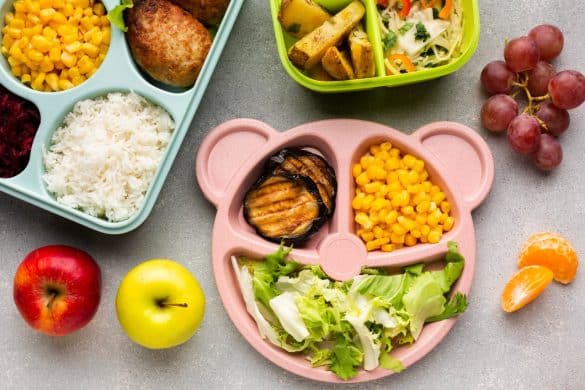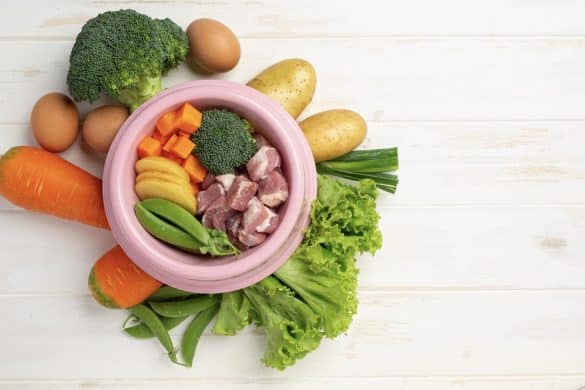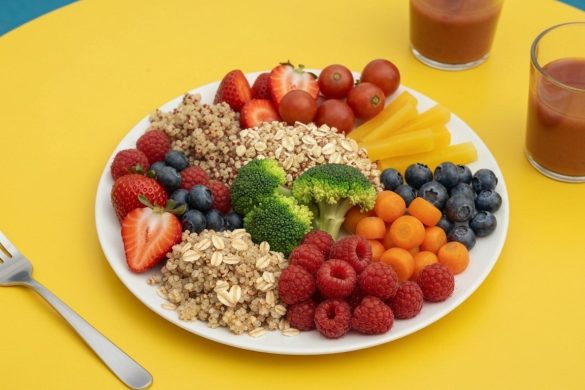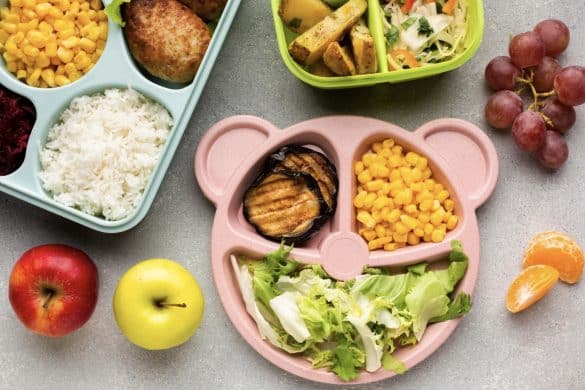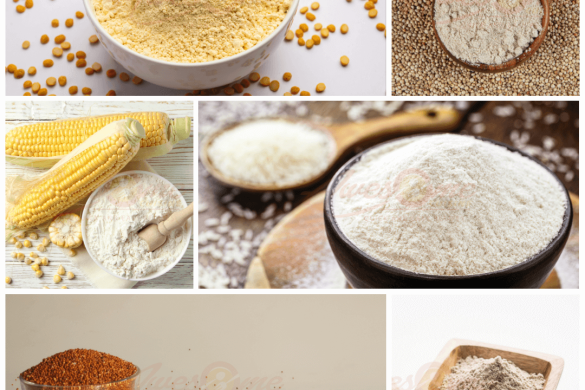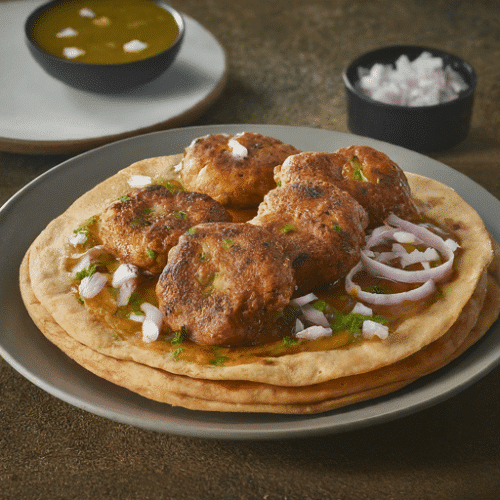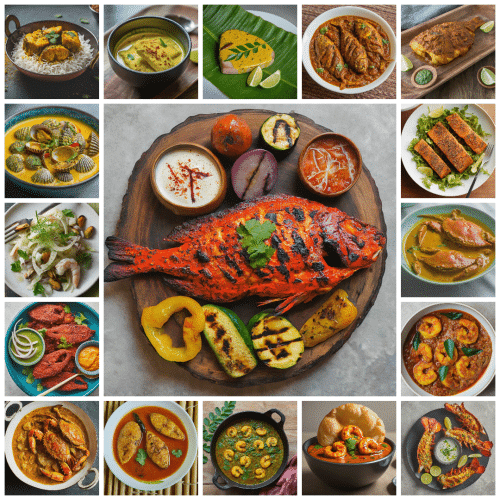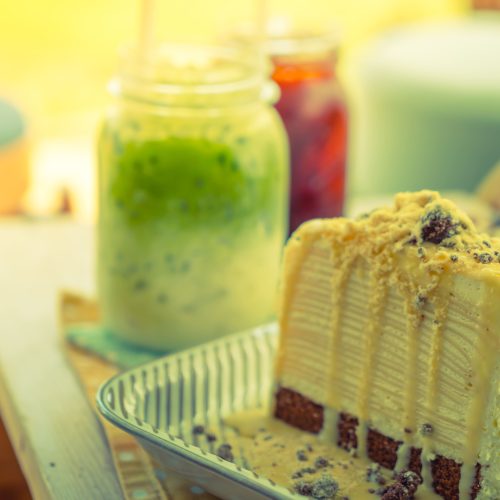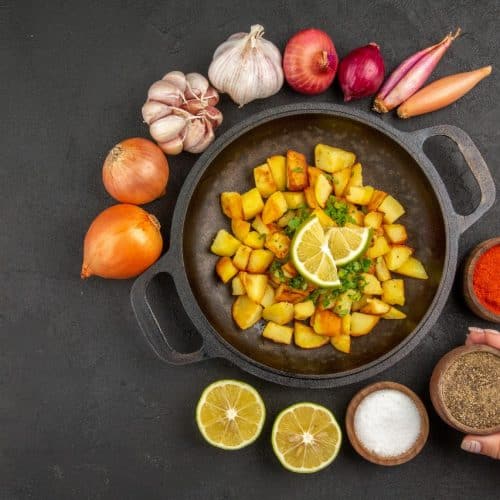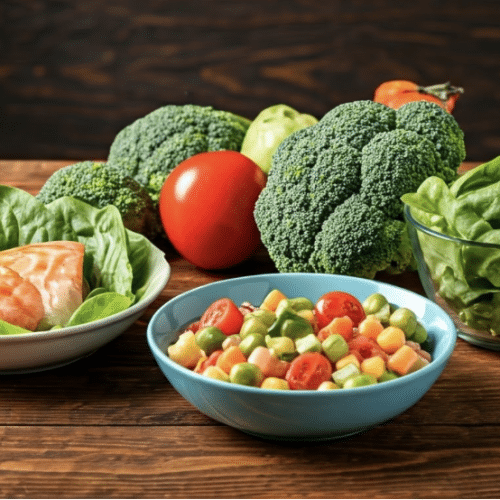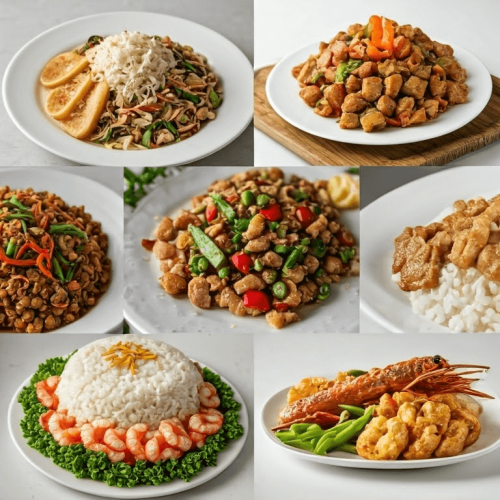Can you still eat traditional Indian dishes every day while living with diabetes? Yes, you absolutely can, as long as you pay attention to how you balance your plate.
Contrary to popular belief, managing diabetes doesn’t require giving up most tasty foods and eating bland meals; it just means choosing the ingredients that actually help keep blood sugar steady and being smarter with one’s portions. And a thali actually makes accomplishing this easy and simple, even on a tight budget.
A traditional thali consists of a mix of grains, dals, vegetables, and proteins, so it already encourages variety. The only real change you need is learning which swaps give you the most nutrition for the least cost, so you can keep enjoying your everyday favorites without breaking your budget.
A Thali is Built-In Portion Control for Diabetes
A thali is already a smart plate model that works wonderfully for managing diabetes. It encourages portion control and variety, unlike most Western plates that tend to rely on one carb-heavy staple that can spike blood sugar quickly.
Small servings of several different items are ideal as they allow you to eat a vibrant, balanced diet that is not only good for diabetes but overall health as well. You can easily include low-glycemic grains, protein-packed dals, and two or more fiber-rich vegetable dishes in the right proportions.
Speaking of fiber, you should probably eat more of it. Research has shown that people who eat higher-fiber diets have a reduced risk of type 2 diabetes complications, so you want to include as much of it in your diet as possible through pulses and legumes; they’re rich in both fiber and protein as well as affordable.
This said, if you haven’t been consuming much fiber in your diet until now, it’s best to start slow to avoid stomach issues. Bloating, gas and sometimes tummy pain and cramps are all possible to experience once you start eating more fiber. But don’t worry, these issues resolve after a while. It just takes some time for your gut bacteria to adapt. So, start slowly and gradually increase fiber content over several weeks while staying well-hydrated.
Affordable Foundations for a Balanced Thali
Okay, so a thali can absolutely work. But how do you build one that truly helps your diabetes? Let’s break down the essentials.
Grains
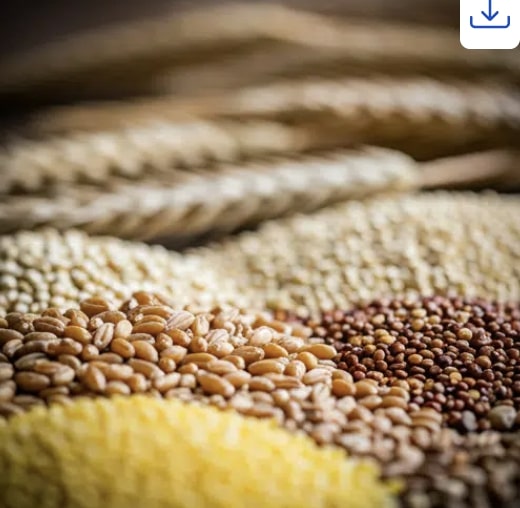
Different Whole Grains
White rice and wheat flour have to go. Or at least be eaten every once in a while, not every day. Instead, include millets like foxtail, little millet, or ragi. Brown rice and rolled oats are good staples too, especially when bought in bulk (cheap but filling, plus oats contain lots of fiber and other healthy nutrients).
As for portion size, it’s best to stick to about a quarter (or a bit less) of your plate. That’s enough for energy and won’t overwhelm your glucose response.
Dals and Lentils
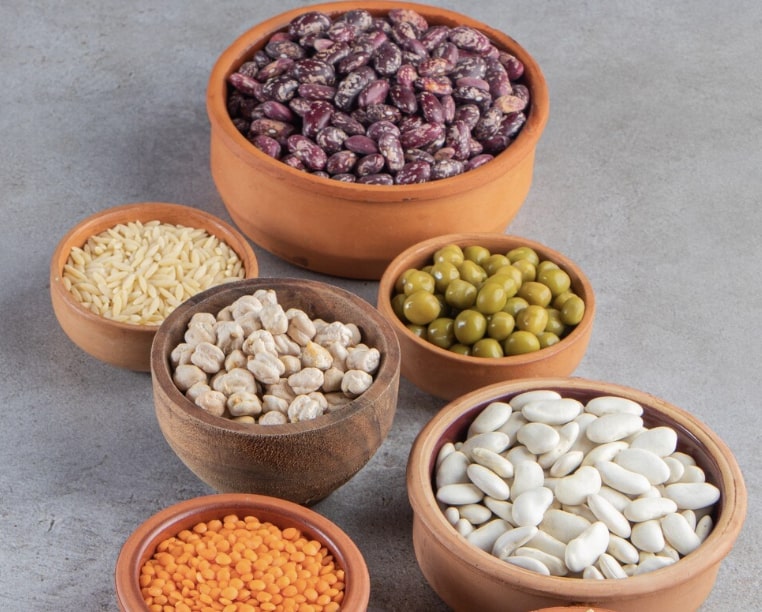
beans and lentils in a bowl
Moong dal, masoor dal, and chana dal all cook quickly (the latter does require soaking, but is still simple to prepare) and are inexpensive when purchased in 2–5 kg bags. They’re filling, versatile, and ideal for batch cooking.
To keep meals interesting, stock at least two different varieties and rotate through the week. Sprouting is another option; it’s pretty simple and requires minimal equipment. Plus, it boosts the bioavailability of nutrients and improves digestibility, so if you want maximum nutrients for health and energy, give it a try. At least once!
Vegetables
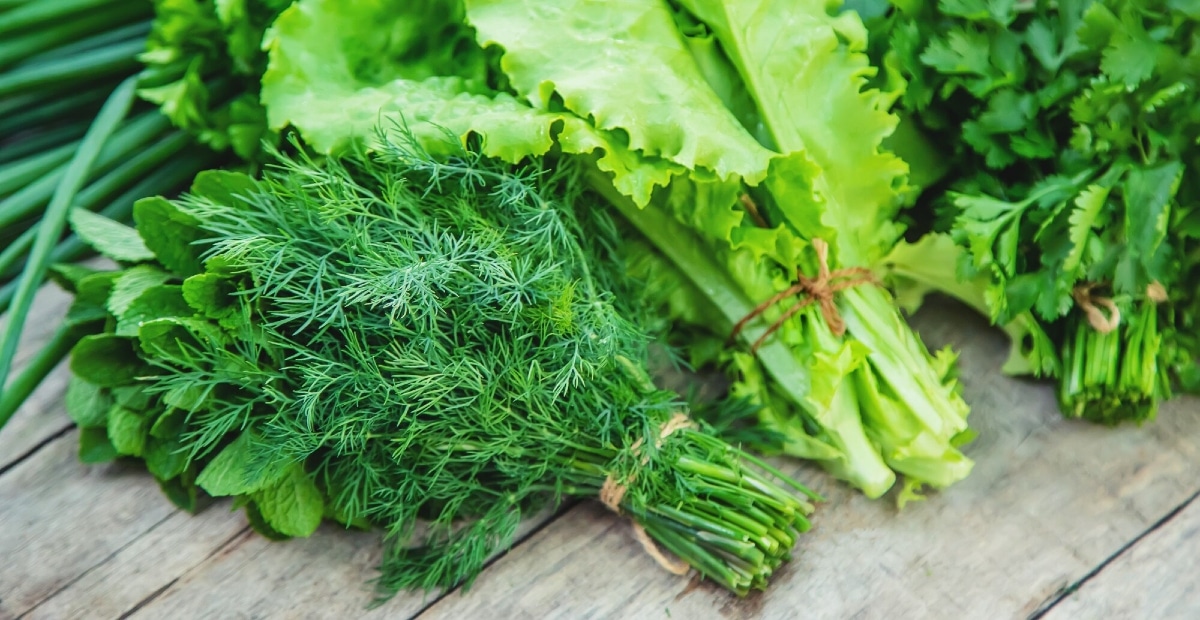
Green Leafy Vegetables
We’re sure you’ve heard the “leafy greens are healthy” spiel numerous times, but do you really eat them enough? If not, definitely try to eat more; they’re low in carbs but packed with healthy micronutrients. Spinach and kale are fantastic, but so are cruciferous vegetables like broccoli, cauliflower, and cabbage. Beans and peas are also great add-ins.
To save money, shop seasonally and make your thali reflect what’s cheapest that week. Frozen vegetables are also great when fresh options are limited. They retain nutrients (and can sometimes even be more nutritious) but often cost less.
Protein Add-Ons
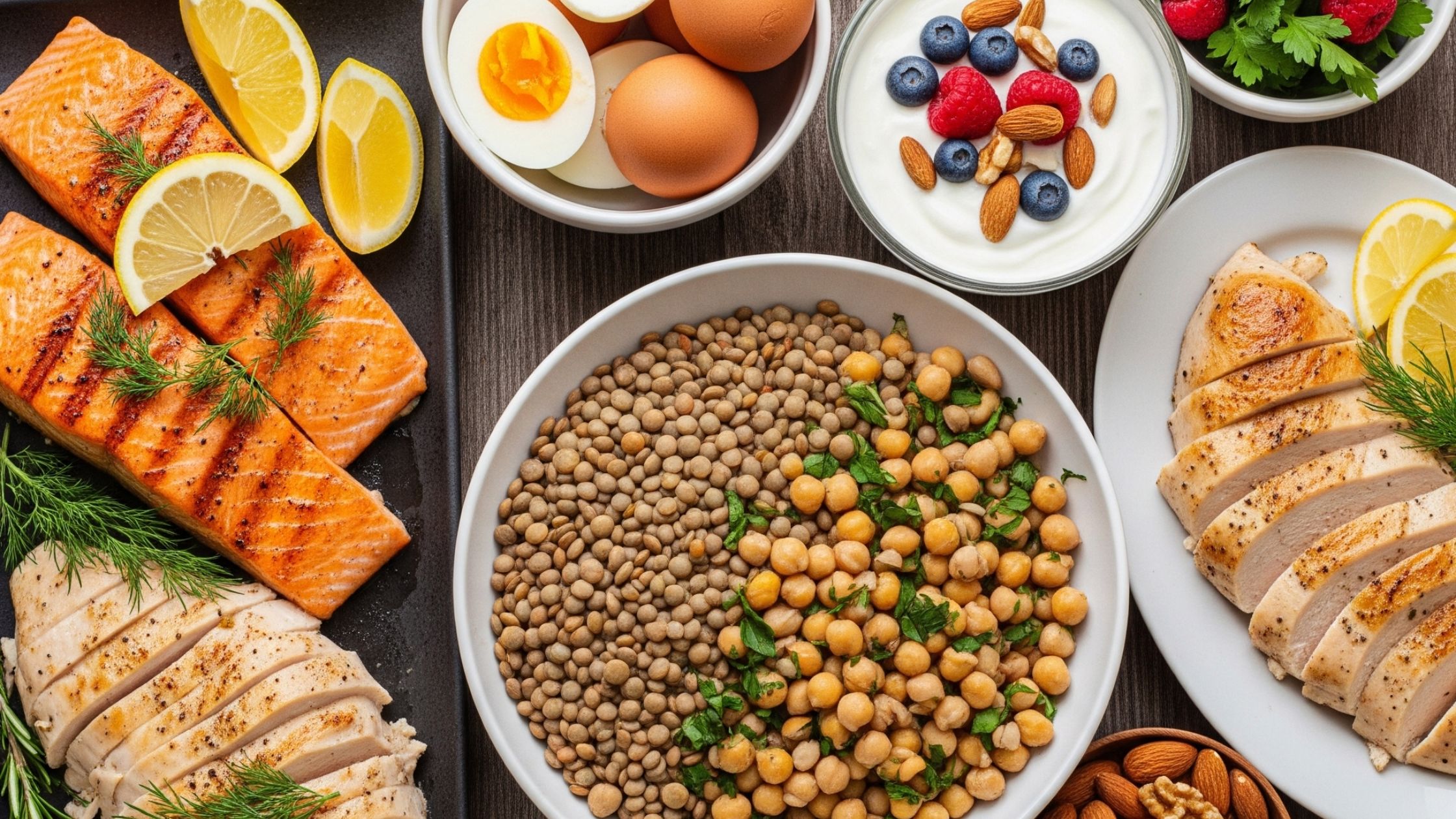
Protein rich food
Low-fat paneer, curd, eggs, and small servings of fish or chicken (if your budget allows) will keep you satiated and satisfied. Speaking of fish, sardines and mackerel often cost less than chicken while providing much more omega-3 fatty acids.
If you’re a vegetarian, roasted chana or sprouted legumes are affordable alternatives.
Portion Guidance and Batch Cooking
Think of your thali as:
- ¼ low-GI grain
- ¼ dal or protein
- ½ vegetables (two varieties if possible)
- Plus curd or a light raita
Cooking in larger batches is best because it will save you both time and money. For example, you can prepare a large pot of dal for two days (which can cover two lunches) with minimal effort. Likewise, pre-cutting veggies you plan on using for your recipes on weekends will greatly reduce your weekday prep. And don’t throw away your leftovers! They can work, too, especially if you refresh them with a quick tadka or add a spice twist. Freezing extra portions is also smart, especially for dals and curries.
Now, a word on portion management. As long as you use smaller plates, fill half the plate with vegetables first, and ladle dal over vegetables instead of grains, you’ll have better glucose control (and you’ll actually feel satiated). If you find that you’re still hungry after three meals, consider eating five smaller ones. One study showed that eating five smaller meals actually leads to lower blood glucose compared to three large ones.
A Budget-Friendly Shopping List
Here’s a sample of an affordable, healthy shopping list. This is for one week and can serve a family of three to four.
- 2 kg moong dal
- 1 kg masoor dal
- 2-3 kg seasonal vegetables (greens + gourds + one cruciferous vegetable)
- 1 kg millets or brown rice
- ½ kg curd or 200 g paneer
- Soy chunks or roasted chana
- Spices: turmeric, cumin, mustard seeds, coriander powder
- Cooking oil: extra virgin olive oil is best if you can afford it, but mustard or groundnut oil works well, too (buy them in bulk to reduce cost).
This is a pretty basic list that you can modify to fit your preferences and budget. But it works for multiple thali variations. For example, a millet roti with palak dal one day, masoor curry with cabbage stir-fry the next, and sprouted mung salad alongside curd rice another day.
Here are also some sample thali plans for different budgets:
Minimal Budget
- Ragi roti
- Moong dal with tadka
- Cabbage poriyal
- Curd
Mid-Range
- Brown rice
- Masoor dal
- Bhindi fry
- Paneer bhurji (small portion)
- Cucumber raita
Flexible Budget
- Foxtail millet upma
- Chana dal curry
- Methi aloo (small serving of potato mixed with greens)
- Fish curry (sardines/mackerel)
- Yogurt with roasted flaxseed
A word on regional adaptations as they all use different things. A South Indian thali can lean on sambar and rasam with ragi balls or red rice, while a Gujarati thali can feature rotis with moong dal and shaak. Punjabi thalis often include rajma or chole, both diabetic-friendly when eaten with portion control and paired with greens instead of excess rice. The point is, it’s better to adapt locally available grains and dals as this is usually cheaper than importing “health foods”. Also, preparing dishes you’re already familiar with takes less time, plus it’s easier to stick to a diet you already know and eat a variation of.
Snacks, Breakfast and Eating Out
The thali principle doesn’t stop at main meals. A diabetes-friendly snack could be:
- Roasted makhana spiced with turmeric and black pepper,
- Sprouted chana salad with onions and tomatoes,
- A small bowl of dahi with chia or flaxseed.
For breakfast, skip the carb-heavy parathas and instead eat ragi dosas, vegetable poha, or upma made with millets instead of semolina. These substitutions reduce glycemic impact without raising costs.
What when you decide to eat out? Go for tandoori proteins, stir-fried vegetables, or millet-based dishes if available. Limit gravies heavy with cream or butter. There are also some simple strategies that work well irrespective of where and what you’re eating: starting a meal with a salad (check out Glucose Goddess for this!), skipping sugary drinks, and sharing rice portions with others so you eat less of it.
Lifestyle Habits First, Medicine When Needed
Even the best thali won’t help much if stress, sleep, or activity levels are out of balance. This is why you need to regularly exercise, whether walking or strength training or swimming; what matters for improving your insulin sensitivity is that you move every day. Likewise, you need to sleep enough and well. Many people skip this step as they don’t see how sleep could possibly be linked to diabetes, but science is clear on this: sleep and diabetes are intricately connected.
Stress management is also important to reduce cortisol, which influences blood sugar. Even simple breathing or short meditation sessions help. None of these strategies costs anything, yet they magnify the benefits of a well-planned diet.
This all being said, even with a good diet, regular exercise, and enough sleep, some people may need medical support to lose weight and control their diabetes. GLP-1 receptor agonists, like Ozempic, have become very popular due to the fact that they help control blood sugar by slowing digestion and reducing appetite. Doctors usually recommend them when diet, exercise, and oral medications aren’t enough. Some people also explore structured programs like WeightWatchers which focus on sustainable lifestyle changes through balanced nutrition and community support. While medications like Ozempic can be costly, combining medical guidance with evidence-based programs such as WeightWatchers often leads to better long-term results.
There are certain supplements that may be able to help as well. Magnesium is a popular choice because it supports insulin sensitivity, and deficiencies are surprisingly common, especially among folks who don’t eat enough dark leafy greens (in the U.S., close to 70% of the population under 70 is deficient!). Likewise, vitamin D has been linked to better glucose metabolism, particularly in people who are deficient. Omega-3 fatty acids (from fish oil or flax) also deserve a mention because they help with inflammation and cardiovascular protection, which matters since diabetes raises heart risk.
Final Words
A diabetes-friendly thali is not only possible, but you can do it on a small budget. You don’t need exotic superfoods or premium health products, just smart eating habits, like a rotation of dals, seasonal vegetables, and thoughtful portioning.
Medical treatments, supplements, and lifestyle adjustments may be layered on as needed, but the everyday plate remains the foundation. And that’s the empowering part: the most effective strategies for managing diabetes often begin in your own kitchen.
Frequently Asked Questions
1. Can I eat rice if I have diabetes?
Yes, but portion size and type matter. It’s best to swap polished white rice for brown rice, red rice, or millets like foxtail or little millet. Keep it to about a quarter of your plate.
2. What is the best dal for diabetes?
Moong dal and masoor dal are excellent because they’re lower on the glycemic index, cook quickly, and provide fiber and protein that slow glucose absorption.
3. Is fruit allowed in a diabetes-friendly thali?
Absolutely! Just choose low-GI fruits like guava, apple, or papaya, and keep servings small (one medium piece or a handful). Pairing fruit with nuts or curd helps prevent a sugar spike.
4. How do I manage cravings for sweets?
You don’t have to cut them out entirely. Keep portions small and pair sweets with protein or fiber (for example, a small piece of jaggery-based chikki with roasted chana). Reserve them for special occasions, not daily meals.
5. Can I follow a thali plan if I’m vegetarian?
Yes. A vegetarian thali can still provide plenty of protein through dals, sprouts, paneer, curd, soy chunks, or roasted legumes. Variety is key.
6. How much oil is safe to use?
Use about 2–3 teaspoons per meal, preferably oils rich in unsaturated fats such as mustard oil, groundnut oil, sunflower oil, or olive oil if the budget allows. Rotate oils weekly for better nutrient balance.
7. Do I need supplements if I’m eating a balanced thali?
Not always, but many people with diabetes are low in vitamin D, magnesium, or omega-3s. If blood tests show deficiencies, supplements can help. Always check with your doctor before adding them.
8. When should I consider medications like GLP-1s or insulin?
If lifestyle changes and oral medications aren’t enough to control blood sugar, your doctor might suggest GLP-1 receptor agonists (like Ozempic) or insulin. Cost, coverage, and your health history play into that decision.
9. How can I save money on a diabetes-friendly diet?
Shop seasonal vegetables, buy dals and grains in bulk, and plan meals around versatile ingredients. Batch cooking also cuts costs and reduces waste.
10. Is eating out completely off-limits?
Not at all. Look for meals that mirror your thali: grilled proteins, dal or sambar, and one grain portion. Ask for less oil, skip fried starters, and share desserts and white rice.
Photo by Vanessa Loring: https://www.pexels.com/photo/plate-of-assorted-vegetables-beside-a-plate-of-nuts-and-beans-5966152/

